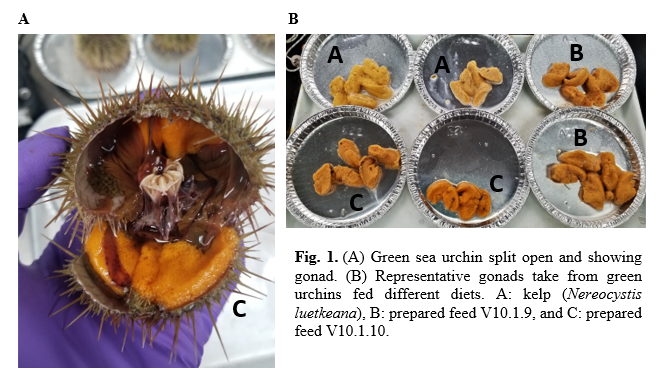FEED AND TEMPERATURE EFFECTS ON LAND-BASED GONAD ENHANCEMENT OF SEA URCHINS IN BRITISH COLUMBIA, CANADA
When sea urchin population growth is uncontrolled, they can over-graze and decimate macroalgal beds, creating areas termed "urchin barrens". Sea urchin gonad enhancement is a proposed method to remove sea urchins from barren grounds, promote the re-growth of macroalgal beds, and produce a highly-valued marketable product. Prepared feeds need to be developed that not only increase gonad yield, but also impart appropriate market colour and flavour. This project assessed the effects of two prepared diets (V10.1.9 and V10.1.10) and a natural feed (bull kelp, Nereocystis luetkeana) and three seawater temperatures (8, 12, 16°C) on gonad yield and quality for both the green (Strongylocentrotus droebachiensis) and red (Mesocentrotus franciscanus) sea urchins held under laboratory conditions for 9–12 weeks. Green urchins fed the prepared diets had overall higher gonad yields and better colour than the green urchins fed kelp at all three temperature treatments, with V10.1.9 producing the highest yields for all three temperatures and V10.1.10 producing the best colour at 16°C (Fig. 1). Red urchins fed V10.1.10 at 12°C had the highest gonad yield out of all the treatments, while the red urchins fed kelp at 8°C had the lowest. The gonad colour was better overall with the red urchins fed V10.1.10, with the best colour again obtained at 16°C, which is the same trend as seen in the green urchins. The prepared feeds tested produced high gonad yields and appropriate market colour in both sea urchin species.
